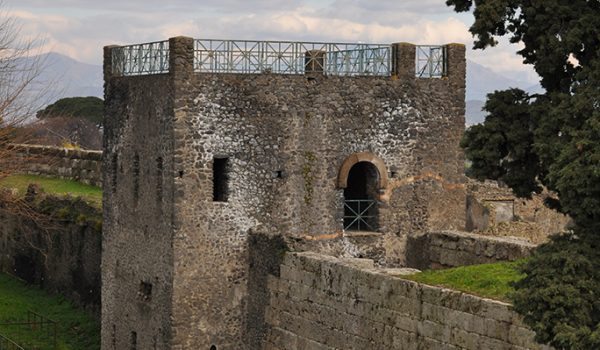These city walls are separate from a second limestone wall, generally thought to date back to the Archaic period. A first analysis of the materials found determined this second phase to be set in the first half of the 5 th century BC. If confirmed, this could be an essential step to broadening our knowledge of Pompeii's urban history. Just as interesting is the extraordinary superimposition of the different road surfaces of a pomerium. The pomerium, dating back to the Archaic period, existed until the 79 A.D. eruption. Finally, the excavation behind Tower XI (oriented towards the city) revealed traces of a road dating back to the first half of the 5 th century B.C., thus confirming Amedeo Maiuri's hypothesis about the presence of an Archaic door of the city where Tower IX now stands.

Pompeii’s Fortifications
APP’s Excavations and Research, Pompeii’s Fortifications
Marco Fabbri (University of Rome Tor Vergata)
APP Contact Person Marialaura Iadanza
In summer 2017 a new excavation site was set up to analyse the walls of the city near Tower XI (also known as the Mercury Tower). Recent surveys have revealed new information about the construction processes and building phases of the extraordinary defensive structures of Pompeii. The results obtained during this first excavation can be summarised as follows: During the excavation just west of the Mercury Tower, the two walls in opus quadratum and the path in between them were found to date back to the same phase from the first half of the 4 th century B.C.. Moreover, at least four different road surfaces were uncovered. A particularly important one among these is a road surface bearing the traces of tracks left by the carts transporting war machinery. This surface, dating back to the early 1 st century B.C., is related to the substantial remodelling of the fortification system done just before the siege of Pompeii in 89 B.C., which is
also confirmed by the construction of 12 opus incertum towers. The excavation in front of Tower XI (oriented towards the external side of the city) confirmed the presence of city walls in pappamonte blocks dating back to the first quarter of the 6 th century B.C..

